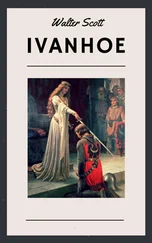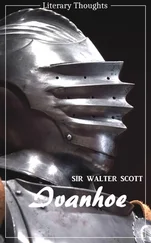line 369. Scott quotes thus from Reginald Scott’s ‘Discovery of Witchcraft’ (1665):-
‘A pentacle is a piece of fine linen, folded with five corners, according to the five senses, and suitably inscribed with characters. This the magician extends towards the spirits which he invokes, when they are stubborn and rebellious, and refuse to be conformable unto the ceremonies and rights of magic.’
line 373. The term ‘Combust’ is applied to the moon or the planets, when, through being not more than eight and a half degrees from the sun, they are invisible in his light. Chaucer, in the ‘Astrolabe,’ has ‘that he be not retrograd ne combust .’ ‘Retrograde’ is the term descriptive of the motion of the planets from east to west. This is the case when the planets are visible on the side opposite to the sun. See Airy’s ‘Popular Astronomy,’ p. 124. ‘Trine’ refers to the appearance of planets ‘distant from each other 120°, or the third part of the zodiac. ‘Trine was considered a favourable conjunction. Cp. note on Par. Lost, X. 659, in Clarendon Press Milton-
‘In sextile, square, and trine , and opposite.’
Stanza XXII. line 407. ‘It is a popular article of faith that those who are born on Christmas or Good Friday have the power of seeing spirits and even of commanding them. The Spaniards imputed the haggard and downcast looks of their Philip II to the disagreeable visions to which this privilege subjected him.’-SCOTT.
line 408. See St. Matthew xxvii. 50-53.
line 415. Richard I of England (1189-99) could not himself have presented the sword, but the line is a spirited example of poetic licence.
line 416. Tide what tideis happen what may. Cp. Thomas the Rhymer’s remarkable forecast regarding the family of Haig in Scott’s country;-
‘Betide, betide, whate’er betide,
Haig shall be Haig of Bemerside.’
line 420. Alexander III was the last of his line, which included three famous Malcolms, viz. Malcolm II, grandfather of the ‘gracious Duncan,’ who died in 1033; Malcolm Canmore, who fell at Alnwick in 1093; and Malcolm IV, ‘The Maiden,’ who was only 34 at his death in 1165. The reference here is probably to Canmore.
Stanza XXIII. line 438. See Chambers’s ‘Encyclopaedia,’ articles on ‘Earth-houses’ and ‘Picts’ Houses.’
line 445. Legends tell of belated travellers being spell-bound in such spots.
line 461. The reference is to Edward I, who went as Prince Edward to Palestine in 1270, so that the legend at this point embodies an anachronism, Edward became king in 1274. His shield and banner were emblazoned with ‘three leopards courant of fine gold set on red.’
Stanza XXIV. line 472. Largs, on the coast of Ayrshire, opposite Bute.
line 479. The ravens on the Norse banners were said to flutter their wings before a victory, and to let them droop in prospect of a defeat.
line 487. ‘For an account of the expedition to Copenhagen in 1801, see Southey’s “Life of Nelson,” chap. vii.’-LOCKHART. There may possibly be a reference to the bombardment of Copenhagen in 1807.
Stanza XXV. line 497. The slight wound was due to the start mentioned in line 462. He had been warned against letting his heart fail him.
line 503. Scott quotes thus from the essay on ‘Fairy Superstitions’ in the ‘Border Minstrelsy,’ vol. ii., to show ‘whence many of the particulars of the combat between Alexander III and the Goblin Knight are derived’:-
‘Gervase of Tilbury ( Otia Imperial ap. Script, rer. Brunsvic , vol. i. p. 797), relates the following popular story concerning a fairy knight: “Osbert, a bold and powerful baron, visited a noble family in the vicinity of Wandlebury, in the bishopric of Ely. Among other stories related in the social circle of his friends, who, according to custom, amused each other by repeating ancient tales and traditions, he was informed, that if any knight, unattended, entered an adjacent plain by moonlight, and challenged an adversary to appear, he would be immediately encountered by a spirit in the form of a knight. Osbert resolved to make the experiment, and set out, attended by a single squire, whom he ordered to remain without the limits of the plain, which was surrounded by an ancient intrenchment. On repeating the challenge, he was instantly assailed by an adversary, whom he quickly unhorsed, and seized the reins of his steed. Daring this operation, his ghostly opponent sprung up, and darting his spear, like a javelin, at Osbert, wounded him in the thigh. Osbert returned in triumph with the horse, which he committed to the care of his servants. The horse was of a sable colour, as well as his whole accoutrements, and apparently of great beauty and vigour. He remained with his keeper till cock-crowing, when, with eyes flashing fire, he reared, spurned the ground, and vanished. On disarming himself, Osbert perceived that he was wounded, and that one of his steel boots was full of blood.” Gervase adds, that, “as long as he lived, the scar of his wound opened afresh on the anniversary of the eve on which he encountered the spirit.” Less fortunate was the gallant Bohemian knight, who travelling by night with a single companion, “came in sight of a fairy host, arrayed under displayed banners. Despising the remonstrances of his friend, the knight pricked forward to break a lance with a champion, who advanced from the ranks apparently in defiance. His companion beheld the Bohemian overthrown, horse and man, by his aerial adversary; and returning to the spot next morning, he found the mangled corpses of the knight and steed.”- Hierarchy of Blessed Angels , p. 554.
‘Besides these instances of Elfin chivalry above quoted, many others might be alleged in support of employing fairy machinery in this manner. The forest of Glenmore, in the North Highlands, is believed to be haunted by a spirit called Lham-dearg , in the array of an ancient warrior, having a bloody hand, from which he takes his name. He insists upon those with whom he meets doing battle with him; and the clergyman, who makes up an account of the district, extant in the Macfarlane MS., in the Advocates’ Library, gravely assures us, that, in his time, Lham-dearg fought with three brothers whom he met in his walk, none of whom long survived the ghostly conflict. Barclay, in his “Euphormion,” gives a singular account of an officer who had ventured, with his servant, rather to intrude upon a haunted house, in a town in Flanders, than to put up with worse quarters elsewhere. After taking the usual precautions of providing fires, lights, and arms, they watched till midnight, when, behold! the severed arm of a man dropped from the ceiling; this was followed by the legs, the other arm, the trunk, and the head of the body, all separately. The members rolled together, united themselves in the presence of the astonished soldiers, and formed a gigantic warrior, who defied them both to combat. Their blows, although they penetrated the body, and amputated the limbs, of their strange antagonist, had, as the reader may easily believe, little effect on an enemy who possessed such powers of self-union; nor did his efforts make more effectual impression upon them. How the combat terminated I do not exactly remember, and have not the book by me; but I think the spirit made to the intruders on his mansion the usual proposal, that they should renounce their redemption; which being declined, he was obliged to retreat.
‘The most singular tale of this kind is contained in an extract communicated to me by my friend Mr. Surtees of Mainsforth, in the Bishopric, who copied it from a MS. note in a copy of Burthogge “On the Nature of Spirits,” 8vo, 1694, which had been the property of the late Mr. Gill, attorney-general to Egerton, Bishop of Durham. “It was not,” says my obliging correspondent” in Mr. Gill’s own hand, but probably an hundred years older, and was said to be, E libro Convent. Dunelm. per T. C. extract ., whom I believe to have been Thomas Cradocke, Esq., barrister, who held several offices under the See of Durham a hundred years ago. Mr. Gill was possessed of most of his manuscripts.” The extract, which, in fact, suggested the introduction of the tale into the present poem, runs thus:-
Читать дальше






